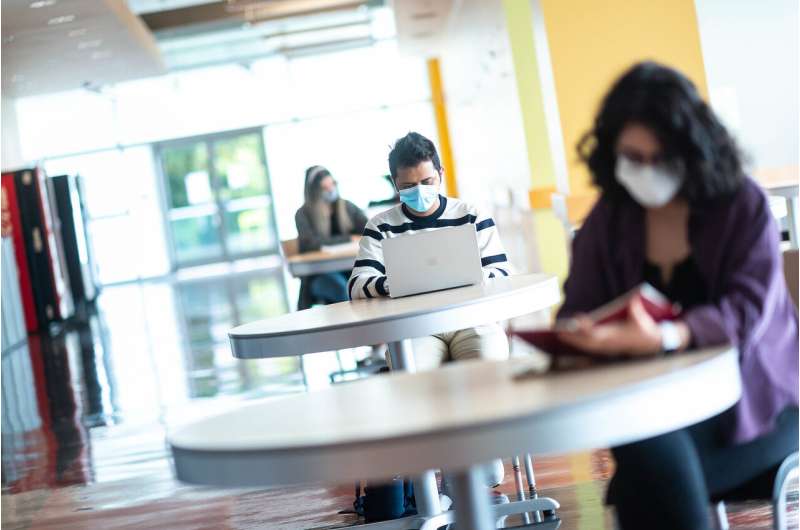Home » Health News »
Knowing someone with COVID-19 increased men’s anxiety more than women’s

It started as a research project to track student mental health over an entire term at university.
Then, four weeks into the 13-week study, COVID-19 hit.
Suddenly, a group of UBC researchers and their partners had an unprecedented opportunity to learn how students were faring emotionally as a global pandemic inched closer and closer to them.
“It surprised me that 19% of the students felt no emotional impact and another 54% were able to manage,” said Dr. Daniel Vigo, lead author of the study published today in the British Journal of Psychiatry. “That’s 73% of students who were either not impacted or were able to manage. That speaks to a very resilient student body.”
Another 17% of students got some help to manage their mental health during that first COVID-19 wave in the spring of 2020, while 10% felt overwhelmed and weren’t able to find help.
“That 10% is a subset of students who may need more outreach in order to be able to access available services. In our future studies, we’ll be looking at what characteristics in the student population predict this vulnerability, so that more assertive outreach protocols can be put in place,” said Vigo.
The researchers sent a survey to a different group of 350 UBC students every week, beginning in the second week of February and still ongoing. The survey, designed to screen for mental health and substance use-related symptoms, asked students how often they had experienced certain symptoms over the past 30 days. Students who answered “some of the time” or more were considered to have screened positive for the symptom. The response rate was about 50%.
In Week 4, shortly before the World Health Organization declared a pandemic, the research team decided to add a question about whether students knew somebody with COVID-19. This was their way of gauging proximity of COVID-19 from the students’ perspective.
Knowing somebody in Vancouver with COVID-19 turned out to be the key factor associated with increased levels of anxiety. As more and more students became aware of somebody who had it, anxiety levels rose. It increased the probability of anxiety symptoms by 15%.
Interestingly, much of this increase was driven by male students. Being acquainted with somebody who had COVID-19 didn’t seem to make nearly as much difference for female students—although they did start out with more anxiety symptoms than men.
“Anxiety symptoms and anxiety disorders are generally more prevalent in women, but it appears they respond with less anxiety when an increase in stressors occurs,” said Vigo. “The level of anxiety moved much more in men than in women, which potentially indicates a more resilient response among women to unexpected stresses.”
While other studies have shown an association between proximity to COVID-19 and symptoms of anxiety, this was the first study to track the association week-by-week over an extended period of time as COVID-19 cases increased.
Source: Read Full Article



